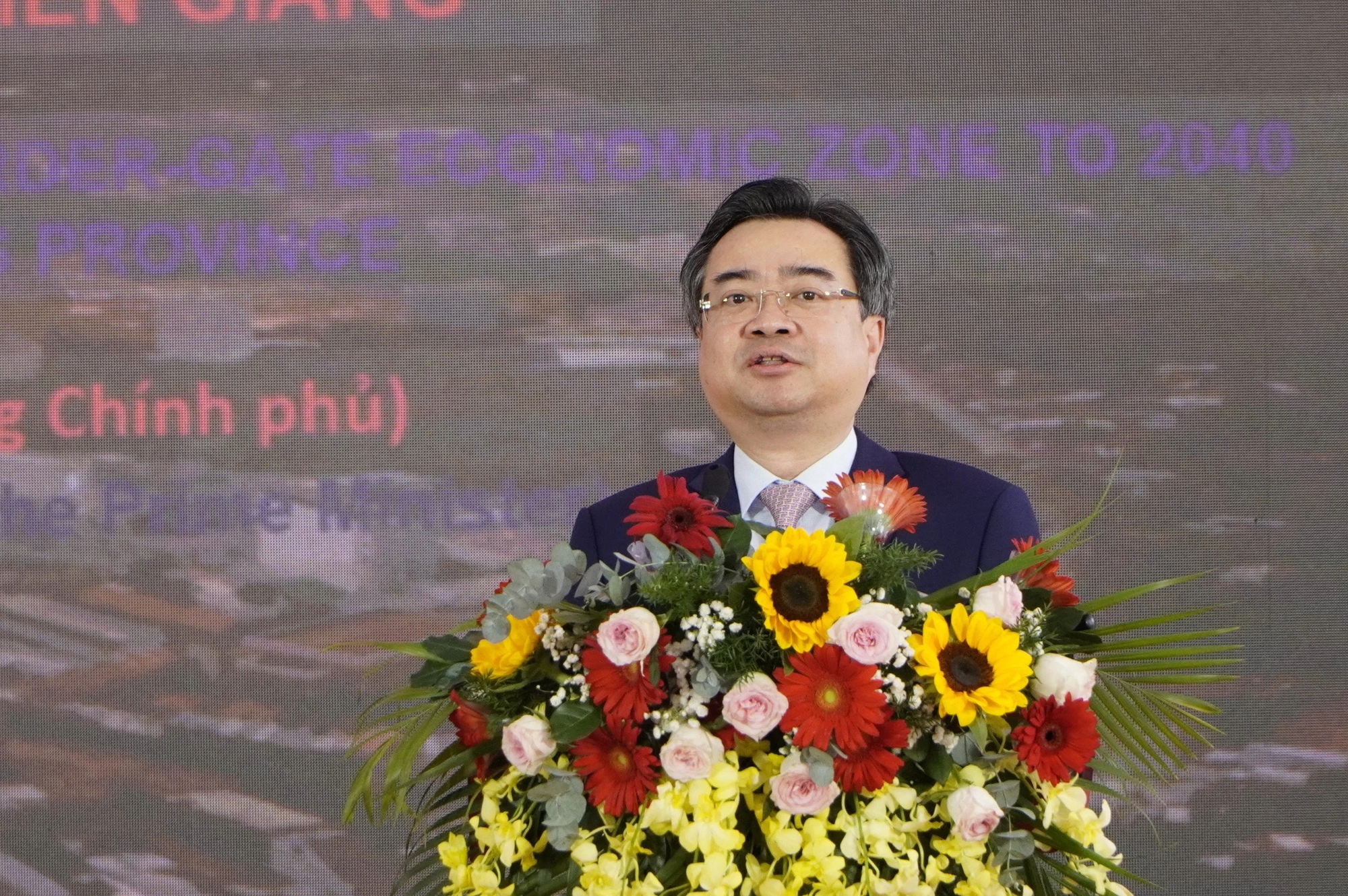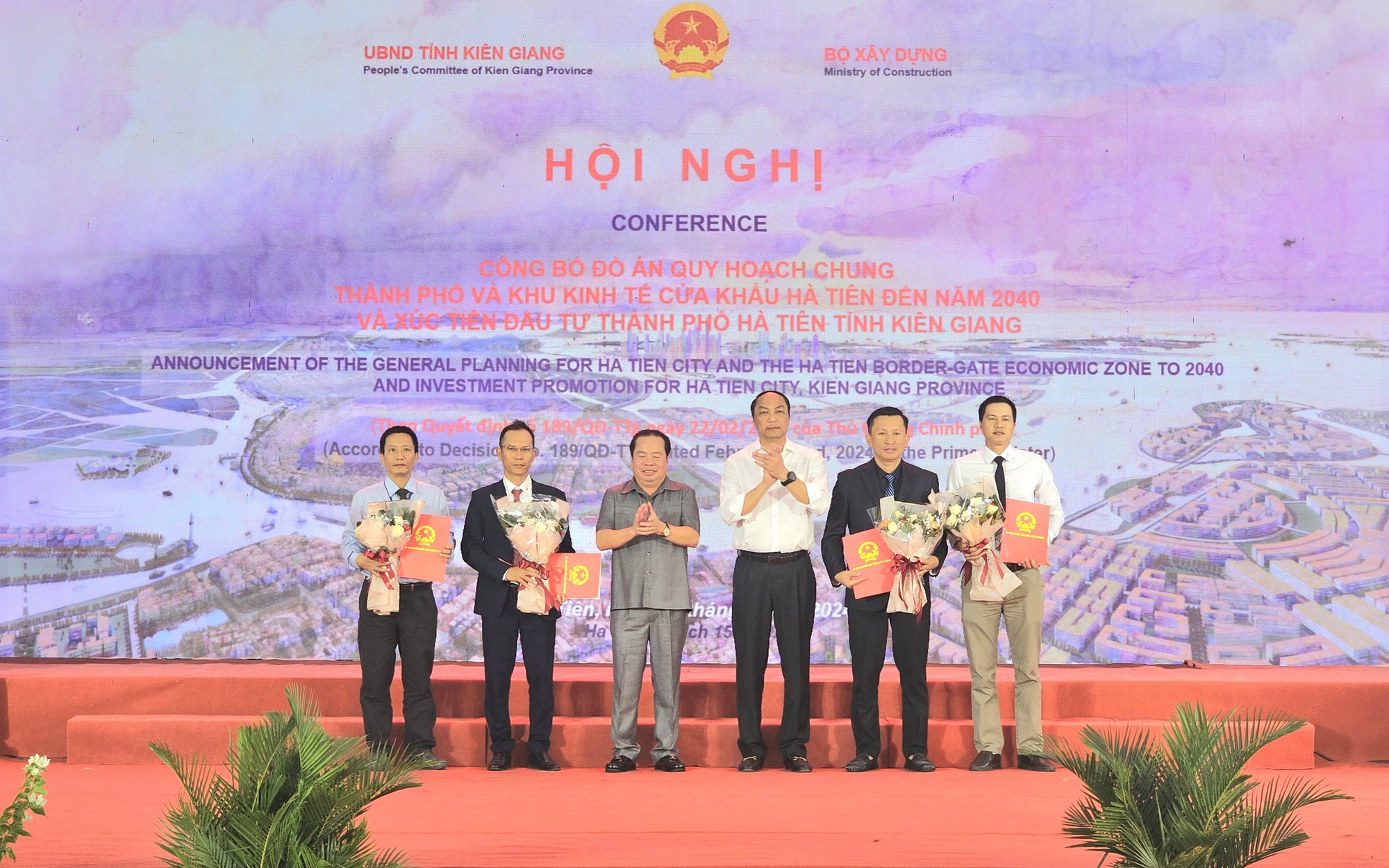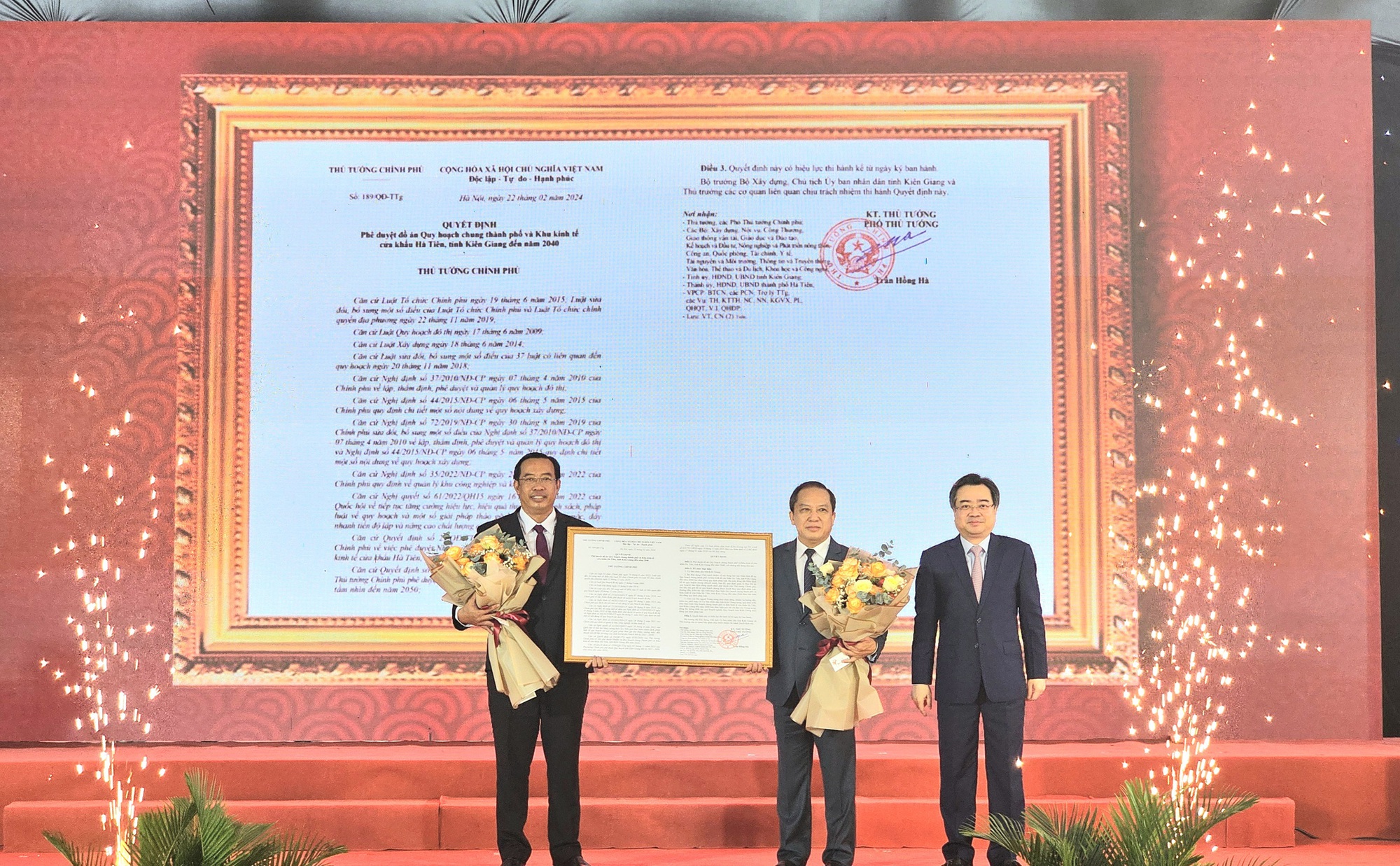On March 15th, in Ha Tien City, Kiên Giang province, the provincial People’s Committee collaborated with the Ministry of Construction to organize a conference to announce the master plan for Ha Tien City and the Ha Tien Border Economic Zone until 2040. At the same time, investment promotion in Ha Tien City was also being promoted.

A corner of Ha Tien City
The master plan for Ha Tien City and the Ha Tien Border Economic Zone until 2040 was approved by the Prime Minister through Decision No. 189/QD-TTg dated February 22, 2024.
According to the master plan, Ha Tien City is an international urban area for culture, administration, science and technology, education and training, and coastal tourism.
It is also a city with a rich historical and cultural heritage and diverse ecological heritage; it holds an important position in national defense and security; it is a high-growth pole in western Kiên Giang province and a key urban area in the Mekong Delta region.

Minister of Construction speaking at the conference announcing the master plan for Ha Tien City
The planning scope of Ha Tien City and the Ha Tien Border Economic Zone is about 34,800 ha. Of which, the entire administrative area of Ha Tien City is about 10,049 ha, including 5 wards: Binh San, Dong Ho, Phao Dai, To Chau, My Duc, 2 communes: Thuan Yen and Tien Hai island commune.

Leaders of Kiên Giang province handing over investment decisions to investors at the conference
The remaining area of about 24,751 ha of coastal land is located between Tien Hai island commune and other communes and wards in mainland Ha Tien City for studying the direction of reclamation and artificial island construction.
The master plan identifies the development of Ha Tien City based on 3 strategic groups: General development strategies; urban and core economic development strategies; foundational development strategies.

Mr. Nguyen Thanh Nhan, Vice Chairman of the Kiên Giang Provincial People’s Committee, speaking at the conference
The spatial development orientation is based on the model of heritage urban areas, bipolarity, unity, multi-center and is divided into 8 development zones, including: Traditional urban area for developing cultural, historical, tourist destinations; Border area for logistics, transit tourism, shopping, ecotourism.
Community tourism, high-tech industry and agriculture; Specialized tourism, exploratory tourism, coastal ecotourism, port development, specialized airport serving tourism, and urban transport connected with Phu Quoc and adjacent to the synchronized economic – social infrastructure and technical infrastructure…
In his speech at the conference, Mr. Nguyen Thanh Nhan, Vice Chairman of the Kiên Giang Provincial People’s Committee, stated that Ha Tien City has experienced rapid development in terms of economy, culture – society, becoming one of the 3 key cities and an economic growth pole of the province.

Minister of Construction Nguyen Thanh Nghị (right cover) presenting the decision to announce the master plan to the leaders of Ha Tien City
“On August 5, 2020, the Prime Minister issued Decision No. 21/2020/QD-TTg on the establishment of Ha Tien Border Economic Zone, which is the second economic zone of Kiên Giang province.
This is an important legal basis for investment projects to enjoy the highest incentives when investing in areas belonging to economic border zones, contributing to attracting even stronger investment for Ha Tien City. As a result, Ha Tien, along with Rach Gia City and Phu Quoc City, becomes the main triangle of urban, commercial and coastal service economy of Kiên Giang province,” Mr. Nhan said hopefully.
Minister of Construction Nguyen Thanh Nghị requested Kiên Giang province to promptly develop and issue urban development programs, architectural management regulations to manage, create unique architectural works and a foundation for concentrated investment towards Ha Tien City meeting the standards of a type II urban area.
The Minister also requested Kiên Giang province to strictly protect the heritage, forest areas, river systems, natural lagoons, coastal areas, public living spaces, natural, and cultural values unique to Ha Tien City.
Especially, there needs to be a focus on strengthening strict management of construction order during the planning implementation process.
Regarding the coastal reclamation area, the Minister emphasized that the construction of artificial islands and subsequent steps must comply with the current regulations of Vietnamese Maritime Law, Natural Resources and Environment Law, Land Law, legal regulations, and other related provisions.
“During the implementation of this important master plan, Kiên Giang province must prioritize the interests of the people of Ha Tien City, improve their material and spiritual lives, and their incomes; at the same time, ensure a harmonious sharing of benefits between the state, the people, and the businesses,” Minister Nguyen Thanh Nghị emphasized.
At the conference, Kiên Giang Province awarded 4 investment approval decisions for projects in the fields of eco-tourism, residential areas, and resorts in Ha Tien City, with a total area of over 16 ha and total investment capital of over 2,460 billion VND; 17 records of investment memorandums for projects in the fields of tourism, commerce, urban areas, industrial zones, seafood processing, water supply, wastewater treatment… with a total area of over 1,200 ha and total investment capital of over 37,400 billion VND.
In addition, the Kiên Giang Provincial People’s Committee awarded 12 commendation certificates to collectives and individuals with outstanding achievements in participating in the master plan for the Ha Tien City and the Kiên Giang province Border Economic Zone until 2040.





































